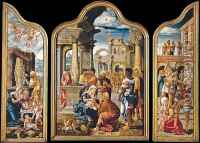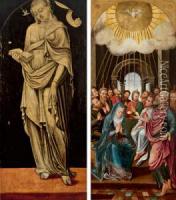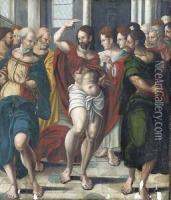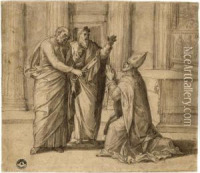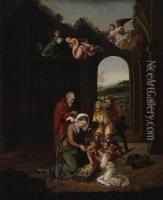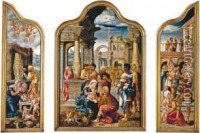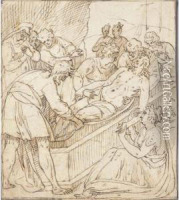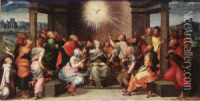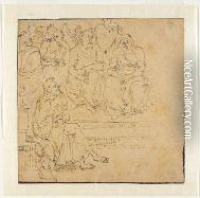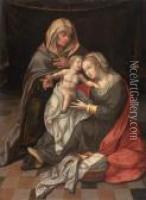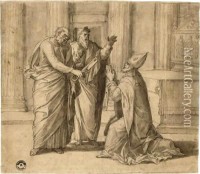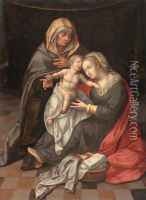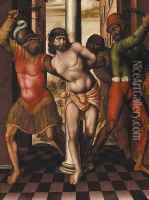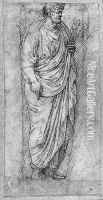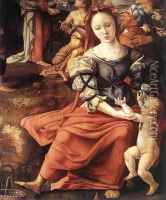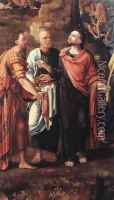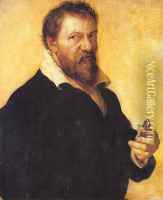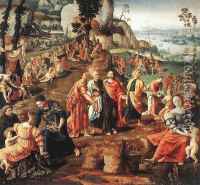Lambert Lombard Paintings
Lambert Lombard was a Renaissance painter, architect, and theorist who was born in the Prince-Bishopric of Liège, which is present-day Belgium, in 1505. He was a key figure in the Northern Renaissance and his influence extended to other artists in the region through his teachings and works. Lombard was not only a proficient painter but also an avid student of ancient art and architecture. He traveled to Italy, which was quite common among Northern European artists at the time, to study the works of Italian masters. This journey significantly influenced his style and thinking.
During his time in Italy, Lombard was deeply impressed by the works of Raphael and Michelangelo. He studied ancient Roman art and architecture, which had a profound impact on his subsequent works. After returning to Liège, he opened his own workshop, which soon became an important center for the Northern Renaissance. It was not only a place for producing art but also a school where Lambert Lombard trained and influenced the next generation of artists. Among his most notable pupils was Willem Key.
Lambert Lombard is credited with being one of the first Northern artists to incorporate classical motifs and proportions into his work. His paintings often featured mythological or historical themes, and he was known for his ability to blend Northern European realism with Italianate grace and composition. Lombard's architectural designs are less well-known than his paintings, but they equally reflect his passion for antiquity and the Italian Renaissance.
Despite his artistic talent, there are relatively few surviving works definitively attributed to Lambert Lombard. This scarcity is partly due to the tumultuous times he lived in, including the iconoclasm that affected the region during the Protestant Reformation. Some of his drawings and designs have been preserved, providing insight into his methods and ideas.
Lambert Lombard passed away in 1566 in Liège. His legacy lived on through his students and the influence he had on the Northern Renaissance. His approach to art, which emphasized a synthesis of Northern and Italian elements, marked a significant step in the development of Renaissance art in Northern Europe.
